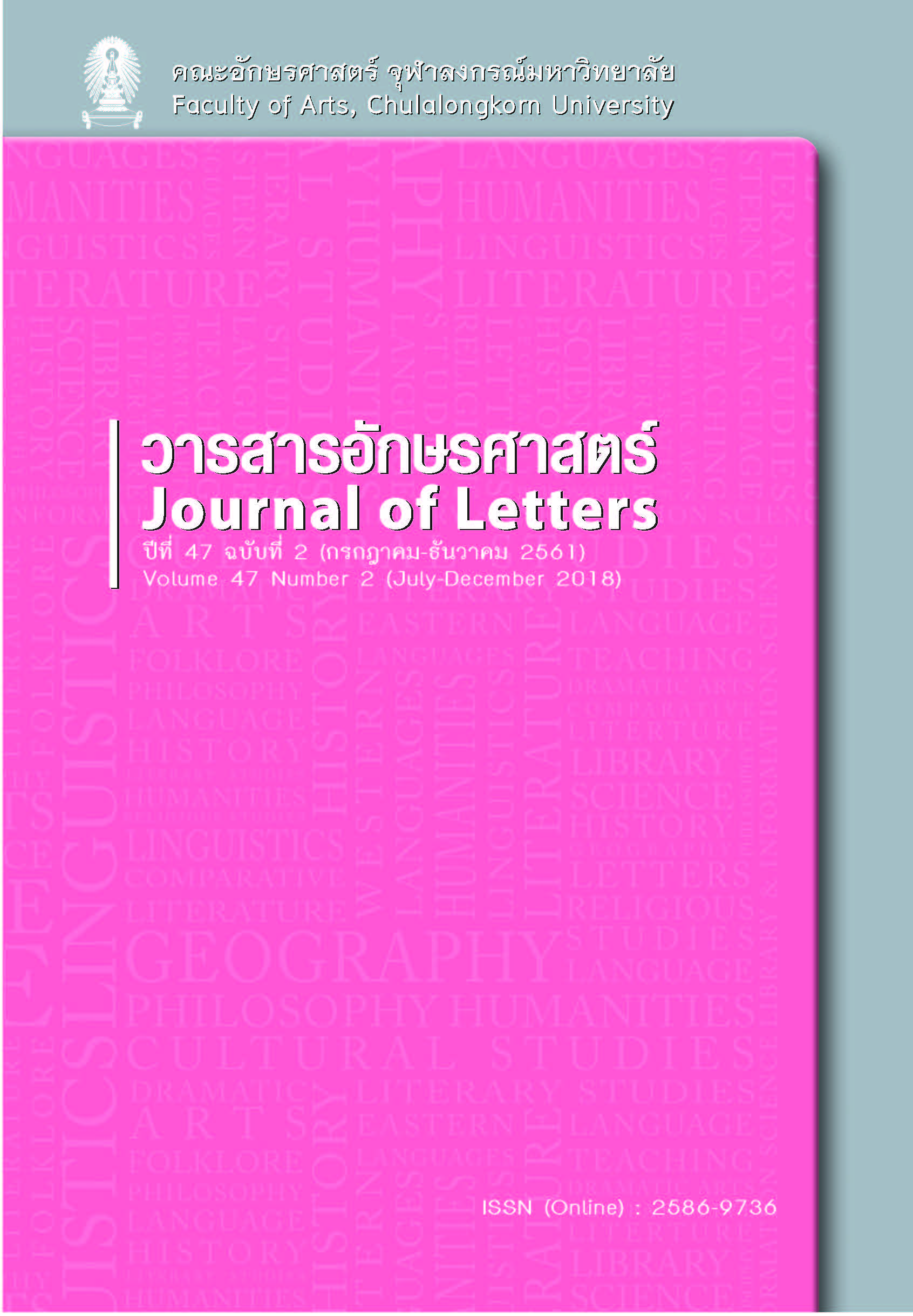Comparing “HEART” Metaphors from a Sensory Perspective in Mandarin Chinese and Thai Languages
Keywords:
“HEART” Metaphors, Sensory words, Bodily experience, Sociocultural experienceAbstract
This research focuses on studying “heart” metaphors from a sensory perspective, characterizing and analyzing relevant metaphorical expressions of Chinese “HEART” (/ɕin55/) in comparison with the correspondent Thai “HEART” (/tɕaj0/) based on Conceptual Metaphor Theory (CMT) of Lakoff and Johnson (1980; 1999; 2003) as well as the theory of knowledge “embodiment theory” (Johnson 1987) which was also taken into account. This study also explores the concept of “heart” in the two languages and their metaphorical mapping process, as well as the aspect of meaning extension conveyed by the word “heart” ranges from a body-part term to the more abstract meanings, including emotion, state of mind and personality. Results were that “heart” metaphors in Chinese and Thai derived from metaphorical expressions related to the five basic human senses, namely, the sense of vision, touch, taste, hearing and smell. Metaphors could be classified as 5 main categories: (1) Visual images (2) Haptic images (3) Gustatory images (4) Auditory images and (5) Olfactory images. The findings also reflected that conceptual systems in China and Thailand shared universal features while differing in details and that users of both languages were influenced by different socio-historical factors and cultural models pointing to individual cardiac conceptualizations.
Downloads
Published
How to Cite
Issue
Section
License
Copyright and plagiarism
Authors are responsible for obtaining permission to use copyrighted materials from copyright owners. Authors are responsible for observing requisite copyright law when quoting or reproducing copyrighted materials. Quotations and reproductions of content from other published sources must be accompanied by a reference and all sources should be clearly listed in the references section. Quotations and reproductions of content from external sources without due attribution could be considered a severe infringement of academic conduct and may constitute a legal offence under the Copyright Act of B.E. 2537. Any legal ramifications arising from the infringement of copyright regulations would be the sole responsibility of the author(s).



